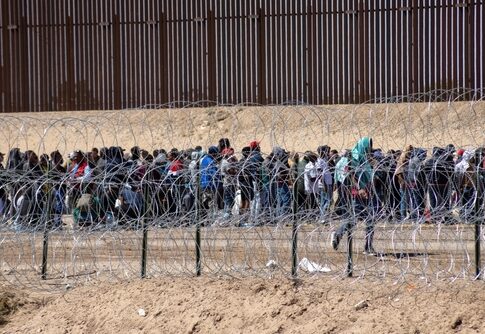An undercover sting operation by the O’Keefe Media Group has unveiled shocking footage. It shows how the Mexican Army is helping migrants illegally enter the U.S. It illustrates the truth of how Mexico is blatantly ignoring American sovereignty. Social media has gone viral with the footage.
Shocking Revelations at the Border
In a startling development that has sent shockwaves through political circles, the O’Keefe Media Group has released hidden camera footage that appears to implicate the Mexican army in assisting illegal border crossings into the United States. Currently, the Mexican government claims the army is there to prevent illegal migration and to help maintain safety. The footage contradicts that claim.
The footage, strategically disseminated across social media platforms by journalist James O’Keefe, has quickly gone viral. This raises questions about border security, the integrity of Mexico, and the longer issue of future cooperation. These disclosures come at a critical time, coinciding with the release of OMG’s new documentary “Line in the Sand,” which promises to delve deep into the complexities and alleged corruption surrounding the ongoing border crisis.
BREAKING: Hidden Camera Footage Reveals Mexican Army Assisting Migrants Crossing Border
"We search and rescue people at the border… We make sure they don’t cross," says 20-year-old Jose Luis Anteno, a member of the Mexican Army, as he shares his role in preventing migrants… pic.twitter.com/fbcm2VuTlz
— O’Keefe Media Group (@OKeefeMedia) October 2, 2024
Historical Context of Border Tensions
The current situation at the U.S.-Mexico border is not without precedent. Over the past few decades, various factors have contributed to the complex landscape of immigration and border security. Since 1980, U.S. policies have inadvertently led to a significant increase in the undocumented population within the country. The militarization of the border halted any easy approach to dealing with illegal migration.
“our country is in serious trouble. We don’t have victories anymore. When do we beat Mexico at the border? They’re laughing at us, at our stupidity… They are not our friend, believe me.”
This sentiment, expressed during a period of heightened tensions, is a common theme with many Americans, especially going into the election season.
🇲🇽 Six migrants died after #Mexican soldiers fired on a group of migrants that had tried to evade a military patrol, the defence ministry said on Wednesday.
🇺🇲 The incident comes amid tensions on #Mexico's southern border as it faces US pressure to contain migration ⤵️ pic.twitter.com/LOGKeHC9BM
— FRANCE 24 English (@France24_en) October 3, 2024
Militarization of the Border
The deployment of military forces to the U.S.-Mexico border has been a contentious issue, raising questions about the appropriate role of the armed forces in domestic matters. Since National Guard units are under state control and the feds handle the military, dual roles can cause stressful situations.
“In response to requests from civil authorities, the armed forces can support state and local governments by law and DoD policy.”
The Posse Comitatus Act generally restricts the military from enforcing domestic law, but exceptions exist if deemed necessary by the president or Congress. These exceptions are typically invoked to “save lives, prevent human suffering, or mitigate great property damage.” However, the effectiveness and appropriateness of military deployment at the border remain subjects of intense debate.
Challenges and Controversies
The militarization of the border has not been without its problems. Reports have emerged of significant issues within the ranks of soldiers deployed to the border region. Sexual assault, drugs, and murder have been reported. The costs of military involvement are in question when actual border control costs are relatively ignored.
“We are the biggest threat to ourselves down here,” said one staff officer who served on the mission.
Low morale, isolation, and inadequate equipment have reportedly contributed to mental health issues and substance abuse among deployed soldiers. These challenges highlight the complex nature of the border security mission and the need for a comprehensive, well-planned approach to address the multifaceted issues at play.


